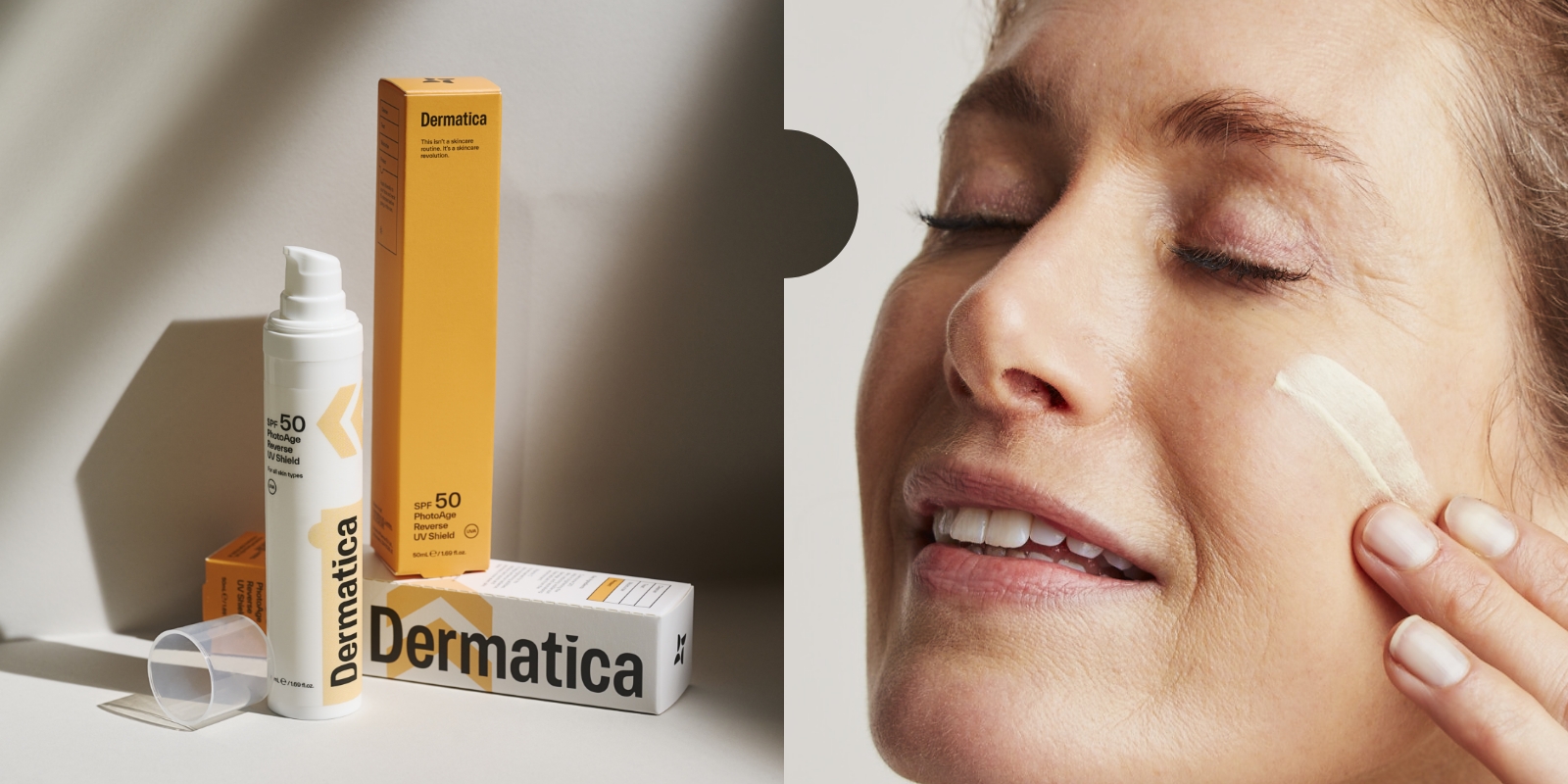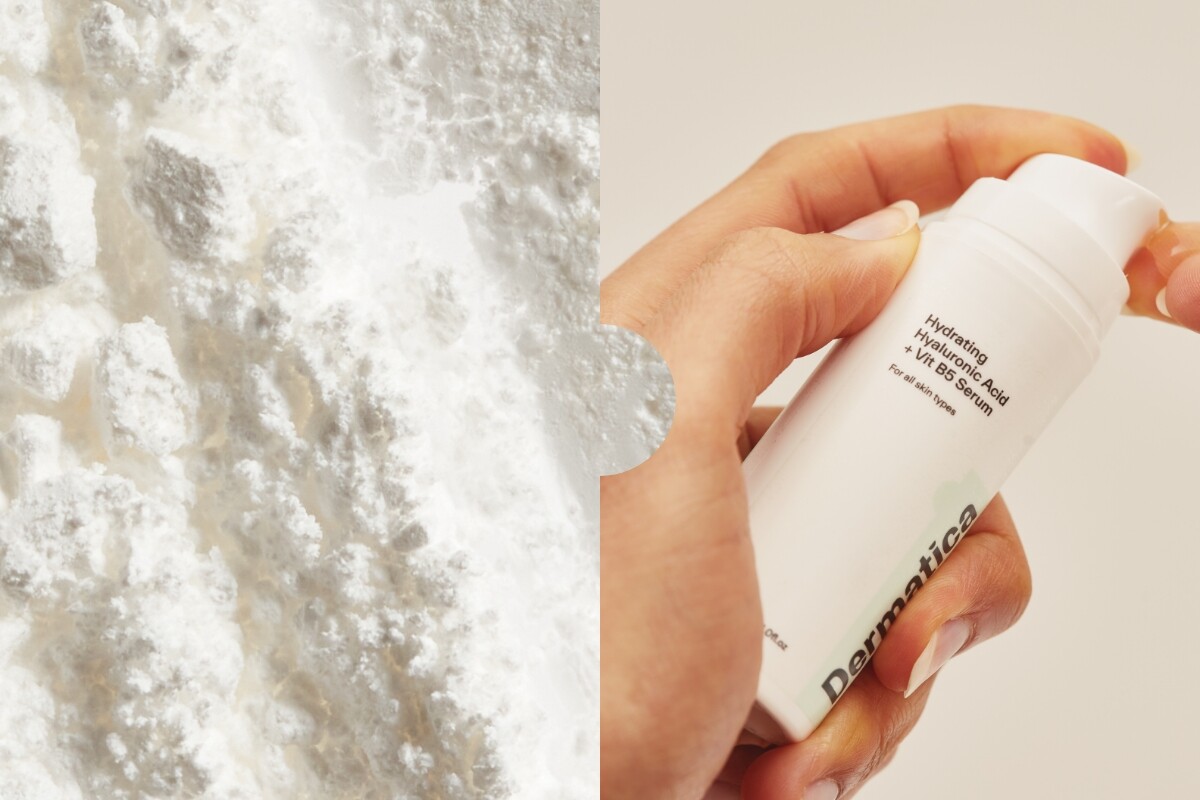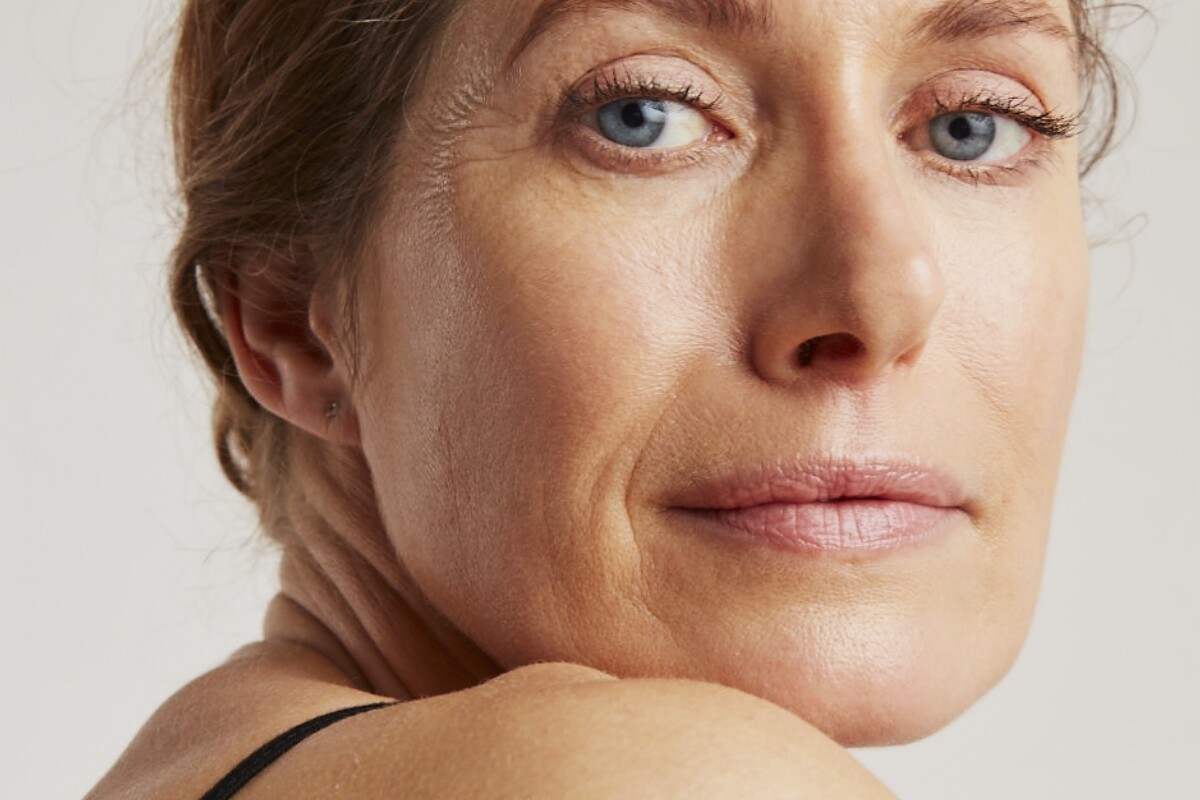Most of us know about common forms of hyperpigmentation and dark spots, but what about white spots from sun damaged skin? Not only can UV rays from the sun lead to more pigmentation – whether that’s from a tan, age spots, darkening of post-acne marks, melasma or a smattering of summer freckles. For some people, they can also lead to white spots on skin, which is a form of hypopigmentation (the medical name for loss of pigment or melanin).
If you think the white patches or spots on your skin are from sun damage, the first thing to check is whether they’re small, flat and appear exclusively on areas that have been exposed to the sun. Next is to find out how to prevent them effectively, and the best treatment options to make them less visible. We’ll guide you through the basics that a dermatology expert wants you to know about this skin condition.
What Are White Spots From Sun Damage?
The medical term is idiopathic guttate hypomelanosis. Studies haven’t determined exactly why they happen just yet, but experts think the loss of skin pigment is due to a combination of skin ageing, genetics and too much sun exposure. These spots are most common on sun-exposed areas, like the forearms, lower legs, upper arms, chest and sides of the face.
They’re small, flat, benign (non-cancerous) patches of skin that are around 3-5mm in diameter. It’s thought that up to 80% of people over 50 years old have multiple white spots. They appear in both men and women, and affect all ethnicities and skin types, so that includes people of colour and people with lighter skin too. (1)
Prevention Tips
These white spots are a form of skin damage that, even with professional treatments like the ones we provide at Dermatica, can be stubborn and take a while to fade. The best way our experts recommend keeping them at bay, or from getting worse, is to protect your skin from the sun. What’s more, practising sun safety by using enough sun protection also lowers your risk of developing skin cancer.
Follow Dermatica’s science-backed tips below to prevent more white spots.
1. Wear Broad-Spectrum Sunscreen Every Day
Even if you’ve never worn sunscreen before, it’s never too late to start. Studies show white spots may be caused by UV damage from repeated sun exposure over many years, so broad-spectrum sunscreen is especially important if you’re going outdoors. And even more so if you’re in a country with a high UV index (you can check the UV index using the Weather app on your phone). We always recommend you wear an effective sunscreen like SPF50 Photodamage Defence Sunscreen on your face every day, no matter the weather.
Don’t forget your body too. Especially your legs and arms – these areas are easy to forget but they get a lot of sun exposure. Find a broad-spectrum body sunscreen with at least SPF30+ that you love using, and slather plenty on any exposed skin 15 minutes before going outside. Reapply every two hours, or after swimming or sweating, to help keep your skin healthy and protected all day.
2. UV Protective Clothing
UV protective clothing includes things like long sleeve shirts, wide brimmed hats, UV visors and trousers. These are a fantastic option to minimise your exposure to ultraviolet (UV) rays. They provide more protection than sunscreen, so wearing them should hopefully bring you more peace of mind. Try to wear this type of clothing when you’re outside, even if it’s cloudy or overcast, if you find that you’re prone to white spots on your face and body.
3. Stay Out Of The Sun During Peak Hours (11am – 4pm)
The sun is at its hottest between the hours of 11am and 4pm, which means that UV rays are at their most intense. Dermatica always recommends staying in the shade during these hours of the day if you can, If you can’t, make sure your skin is covered or protected with sunscreen. (2)
4. Avoid Tanning Beds
Tanning beds can be more dangerous to your skin than going out in the sun without protection, both for developing pigmentation conditions and increasing your risk of skin cancer. The UV output is up to ten times more intense than sunlight, so they’re extremely harmful to your skin and should be avoided completely. (3)
5. Polypodium Supplement
Polypodium leucotomos is a supplement that’s been shown to boost UV protection. It may also have antioxidant and anti-inflammatory benefits, too. Taking these might help protect your skin against the harmful effects of UV radiation (UVR). They can also help prevent the oxidative stress that can damage DNA, which can change your skin’s structure and how well it functions. They aren’t, however, a replacement for broad-spectrum sunscreen or UV protective clothing.
While polypodium supplements are generally safe for most people, it is a dietary supplement, so speak to your doctor or healthcare provider if you have any questions or concerns. This supplement shouldn’t be used as a substitute for sunscreen or protective clothing. (4)
Treatments – What Actually Works?
If you already have white spots from sun damage, these are some treatment options you may want to talk about with your licensed dermatology provider.
Tretinoin – The Gold Standard Treatment
Tretinoin is a prescription cream. It’s a type of retinoid derived from Vitamin A. Tretinoin is considered the gold standard topical (applied to the skin) treatment, as it’s the only ingredient that’s been studied and examined for the treatment of white spots from sun damage.
This topical cream works by helping to noticeably fade these spots and even out your skin tone. It does this by increasing your skin’s ability to turn over skin cells (exfoliate). Boosting this natural process helps remove outer layers of skin to expose new, healthier, younger skin cells beneath. This reduces visible signs of sun damage by removing sun-damaged cells from the surface of your skin. Our experts have found that it can often take up to 4 months to see visible results. (5)
Read more about the benefits of tretinoin.
You can use tretinoin on the body too, but again – the cream that you use on your body must be prescribed separately by a licensed dermatology expert. Don’t use the tretinoin you’ve been prescribed for your face on your body, as it hasn’t been personalised to you for this purpose. Remember, tretinoin is a prescription ingredient, so it needs to be used under professional supervision.
Adapalene
Adapalene is another prescription-only topical retinoid cream that works similarly to tretinoin, and has many of the same benefits. If you’re using this topical medication already, you may notice it helps improve white spots. However, it hasn’t been studied for this yet, so speak to your dermatology provider about what options are available to you if you want to try a more targeted approach.
Are you a Dermatica subscriber? Our dermatology experts are here to help. If you’d like to ask them about changing your treatment goals, reach out to them from your dashboard. They’ll be able to offer advice and – if they deem it appropriate – change the ingredients in your personalised formula at no extra cost.
Other Retinoid Treatment Options
Retinol & Retinaldehyde
Don’t have access to prescription retinoids for your body or face? You may want to try your local chemist, pharmacist or drugstore (depending where you are in the world). The skincare and bodycare sections might stock body lotions or creams that contain retinol or retinaldehyde, which are both non-prescription, milder forms of retinoids.
Because retinol and retinaldehyde are inactive forms of topical retinoids, they take longer to see results than active forms like tretinoin or adapalene. This is because they need to go through a conversion process on the skin before they become active. There’s still a chance they will help though, so give them a try if that’s what’s available to you. (1)
Avoiding Potential Side Effects From Retinoids
When you first start using retinoids, it’s normal to notice a few side effects as your skin gets used to the treatment – this just means they’re working. These should subside within 1-2 weeks, so as long as they aren’t too uncomfortable or painful, try to keep going and stay consistent. The results will be worth it. (7)
To alleviate some of the dryness, flaky skin or irritation you’re experiencing, try the ‘retinol sandwich method’. All you need for this is a gentle and fragrance-free moisturiser. If you have oily or breakout-prone skin, try our Soothing Centella Gel Moisturiser. For balanced to dry skin types, or if you prefer a richer formulation, our Nourishing Ceramide + Peptide Moisturiser is perfect.
Skipping your treatment for a day or two here and there is also fine, and won’t reverse your progress. You can always apply it more regularly again once your skin feels better.
Some people don’t notice any side effects at all. That’s normal too, it just depends on your individual skin.
In-Office Treatments Provided By A Dermatologist
If the options we said above don’t work, a dermatologist might suggest more intensive procedures. Some of these include cryotherapy, excimer laser treatment, fractional laser treatment, chemical peels or phenol peels.
These should only be performed by a licensed, experienced dermatologist in their clinic to avoid making your condition worse or causing any unnecessary side effects. If you have a medium-to-darker skin tone, you should check with your dermatologist if they have experience performing these procedures successfully on people with a similar skin tone to yours to be extra safe. (1)
What You Can Do Next
White spots from sun damage can be trickier to treat than hyperpigmentation, but this condition is common, so just know at Dermatica we treat people like you every day. You’re not alone and there are plenty of solutions to try. They aren’t a form of skin cancer but if they are impacting your quality of life, it’s best to speak to a licensed dermatology expert or reach out to us from your dashboard for more treatment advice.
To find out what formulas are suitable for your skin, visit our website.
References
1. Brown F, Crane JS. Idiopathic Guttate Hypomelanosis [Internet]. PubMed. Treasure Island (FL): StatPearls Publishing; 2021. Available from: https://www.ncbi.nlm.nih.gov/books/NBK482182/
2. Sultana N. Sun Awareness and Sun Protection Practices. Clinical, Cosmetic and Investigational Dermatology. 2020 Sep;Volume 13:717–30.
3. D’Orazio J, Jarrett S, Amaro-Ortiz A, Scott T. UV radiation and the skin. International Journal of Molecular Sciences. 2013 Jun 7;14(6):12222–48.
4. Calzari P, Vaienti S, Nazzaro G. Uses of Polypodium leucotomos Extract in Oncodermatology. Journal of Clinical Medicine [Internet]. 2023 Jan 1;12(2):673. Available from: https://www.mdpi.com/2077-0383/12/2/673?fbclid=IwAR0kK9gPbUDx_2UFEmwZ6rn_sQ5ClpiTptGftMskitz3K9zimquVyUIuna0
5. Pagnoni, Albert M. Kligman, Iqbal S A. Hypopigmented Macules of Photodamaged Skin and Their Treatment with Topical Tretinoin. Acta Dermato-Venereologica. 1999 Jun 24;79(4):305–10.
6. Ramchatesingh B, Martínez Villarreal A, Arcuri D, Lagacé F, Setah SA, Touma F, et al. The Use of Retinoids for the Prevention and Treatment of Skin Cancers: An Updated Review. International Journal of Molecular Sciences. 2022 Oct 20;23(20):12622.
7. Motamedi M, Chehade A, Sanghera R, Grewal P. A Clinician’s Guide to Topical Retinoids. Journal of Cutaneous Medicine and Surgery. 2021 Jul 22;26(1):120347542110350.





